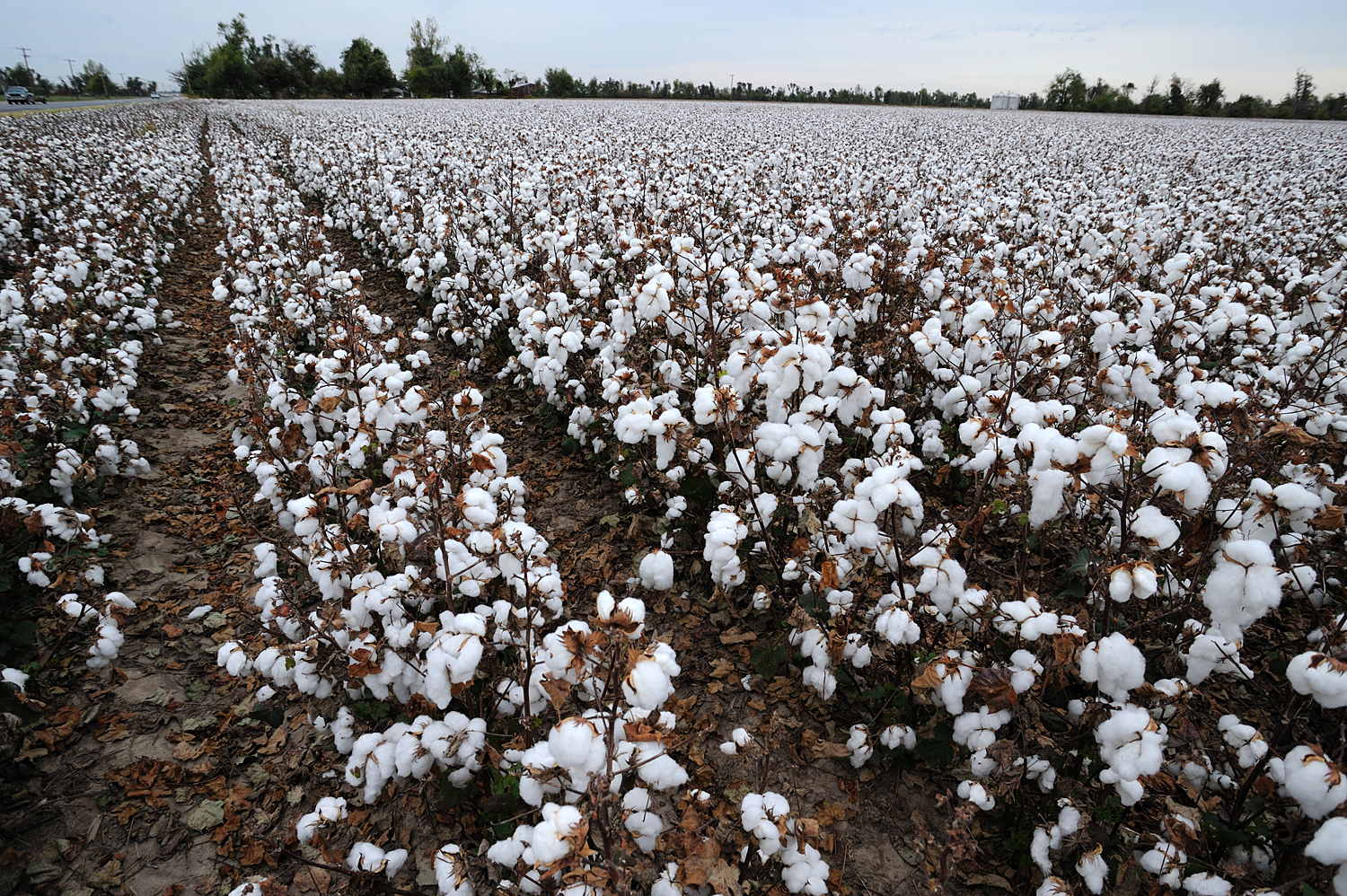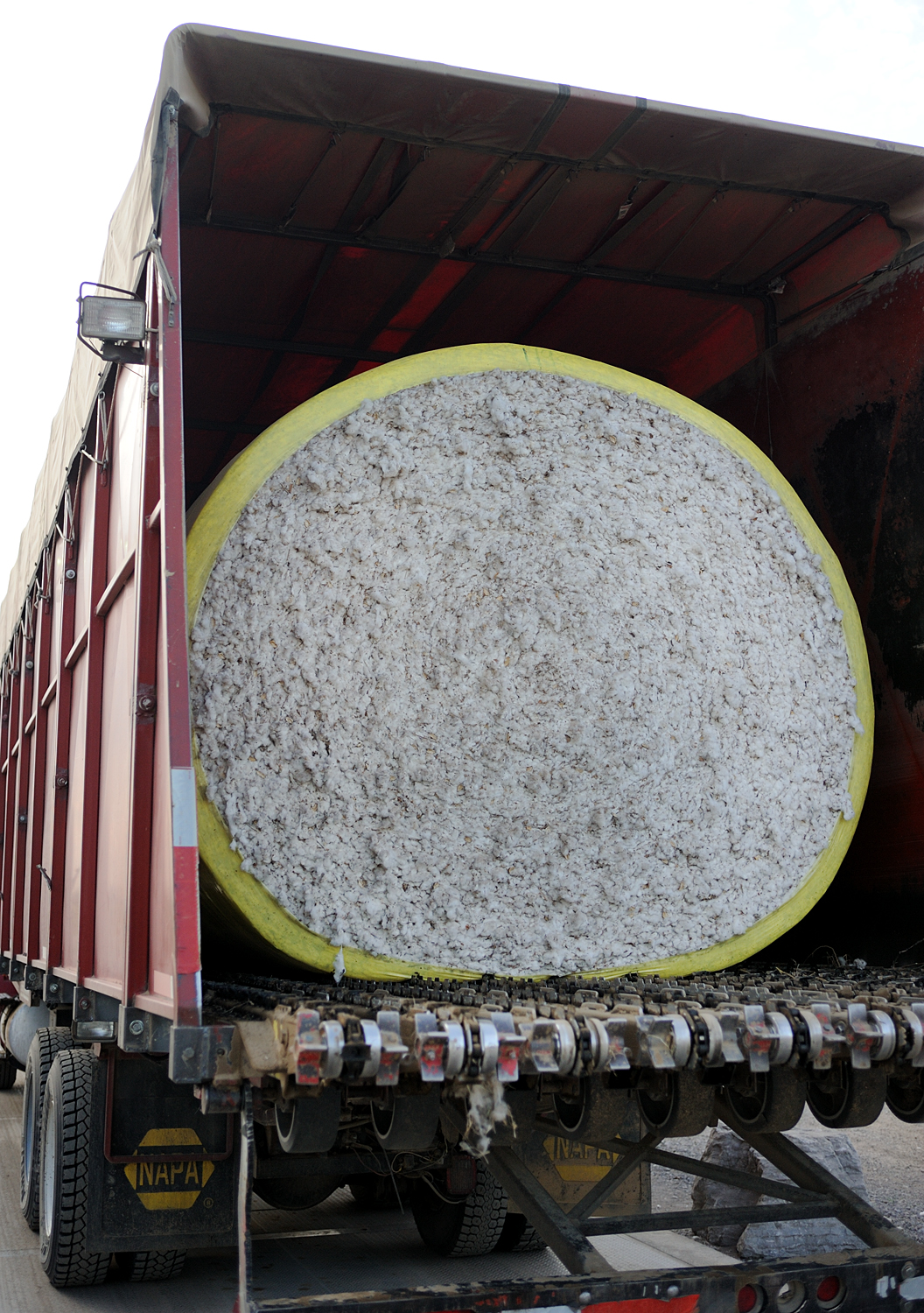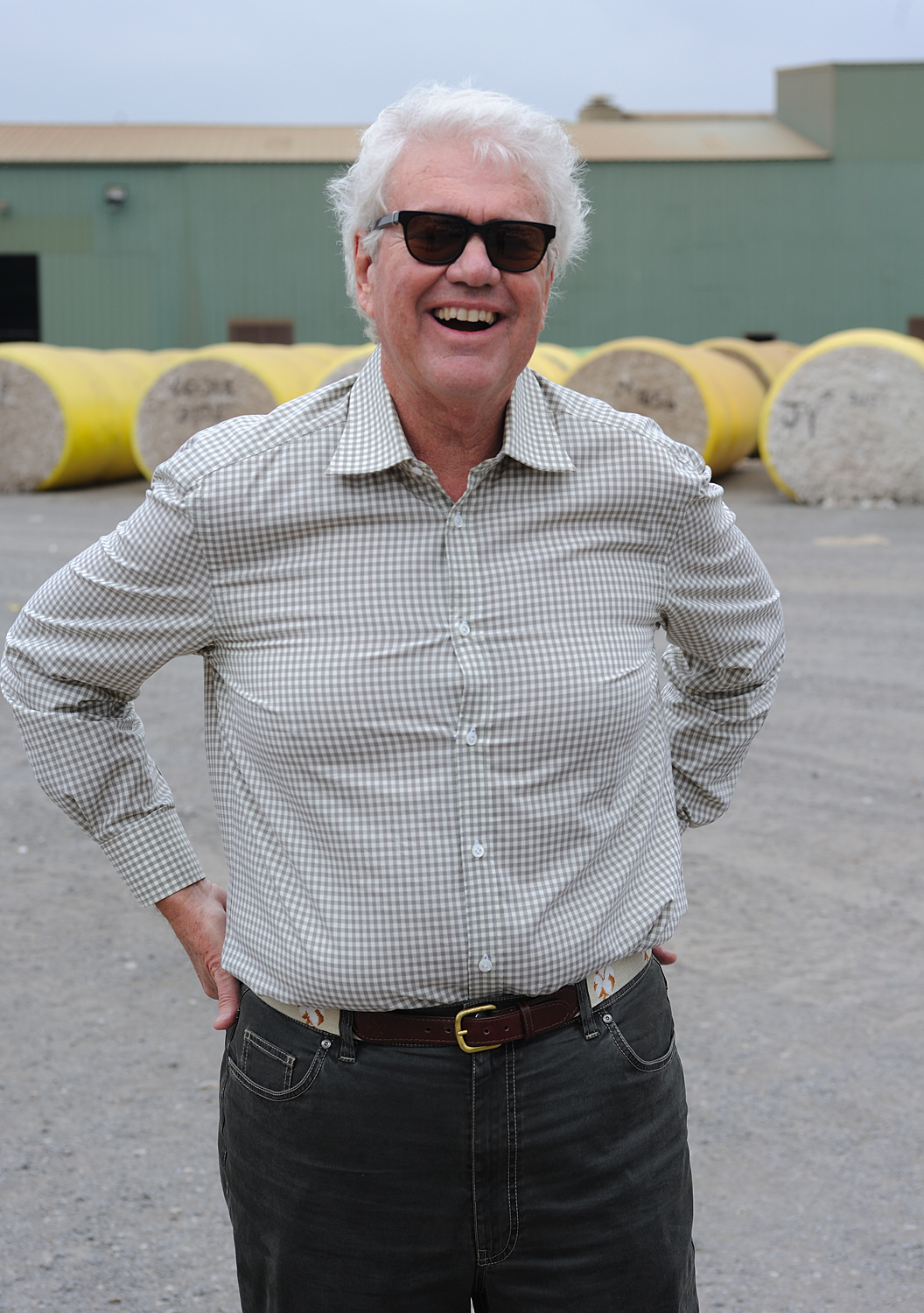 The Mississippi Delta, which began around Sikeston and continues all the way to the Gulf, is cotton country and ‘tis the season for pickin’ it. It’s everywhere, smooshed into big round bales and waiting in the fields, wrapped in pastel wrappers like giant nougat candy bars.
The Mississippi Delta, which began around Sikeston and continues all the way to the Gulf, is cotton country and ‘tis the season for pickin’ it. It’s everywhere, smooshed into big round bales and waiting in the fields, wrapped in pastel wrappers like giant nougat candy bars.
It’s traveling down the roads in semi trucks, waiting in line at the cotton gin and blowing in white, frothy waves across the highway.
Although most of the fields have now been harvested, I found one still covered with little clouds of white.
Gins like those in New Madrid and Holland, MO, are working 14 or more hours per day to get it processed and shipped to market as quickly as possible.
Mr. Sonny Berry, owner of the L. Berry Cotton Gin at Holland, is a happy man this year. The price of cotton is at an all-time high. The cotton industry suffered when synthetic fabrics were preferred, but that tide has turned, and Delta cotton is the first choice for fine “white goods”. Like many people I’ve spoken with recently, his family has been working this land for many generations. “It’s basically the same process as when Eli Whitney invented the cotton gin”, he said, “just faster and easier.” The cotton is separated from the seed and hull, all of which is used for other purposes, then cleaned and compressed into smaller bales. It’s all mechanized and, like farming in general, requires much more equipment and much less manpower than in the past.
If you drive through small communities, it’s clear most people there are not doing so well. The labor force that was once vital to agriculture is no longer needed and the new ways have not brought enough new jobs. There is much poverty and some people have told me they are sure that their town is dying – it’s just a matter of time.
Tourism is a hopeful possibility for some. These river towns are loaded with historic structures and stories and every community has something unique to share. In many cases, it seems it’s just a matter of finding the resources to get the word out. Traveling this Great River Road is nothing like visiting a theme park or Las Vegas. The charms of a community can be subtle at times and require you to slow down and look a little deeper. It’s well worth doing, in my opinion. Looking beyond the surface of the places and people you encounter can shine a big light on some things hidden deep within you as well.
New Madrid, Missouri, is best known for being the epicenter of one of the strongest earthquakes in history. Because the area was sparsely populated in 1811 and 1812 when the series of quakes occurred, death tolls were small, but it was felt as far away as Boston and New York City. The ground buckled in great waves, causing the Mississippi River to run backwards for a time, and changing its course drastically. The New Madrid Historical Museum, housed in the former “First and Last Chance Saloon” on the riverfront, can help you comprehend the magnitude of this event. People living around New Madrid are reminded frequently that another quake could happen at any time; tremors are felt regularly and accepted as a fact of life. I found myself wishing for a SMALL tremor to occur, just so I could feel it and tell you about it, but nothing wiggled. My guess is, though, that if New Madrid could find the funds to add an earthquake simulator to their museum, people would come in droves!
Then there’s the story of the earthquake that didn’t happen. In 1990, Iben Browning, a Texan with degrees in Philosophy, Zoology, Genetics and Bacteriology (but apparently nothing related to Earth Science or Seismology) declared there was a 50/50 chance (seems to me that’s about the same as it would be every other day, but no matter…) of a major earthquake in New Madrid occurring on December 2 or 3. Although most of the scientific community dismissed the prediction, Browning had a past record of several accurate predictions and people started saying, “What if…” Word spread and things got pretty crazy. This town of 3200 was suddenly trying to accommodate a media circus with nearly 50 network satellite trucks and hundreds of reporters. There are differing versions of how seriously the townspeople took the whole thing, as I’m sure there were different reactions at the time. The schools closed for two days because no one wanted the responsibility of “having been warned and not listening”. The National Guard set up a mobile hospital, but said it was for practice and had nothing to do with the prediction. Some residents slept in tents outside (remember it was December!) to be away from structures, while others sold food and supplies to the visitors. Virginia Carlson was the Director of the New Madrid Historical Museum in 1990, as she is today. She chuckled as she waved her hand at the newer section of the Museum and told me, “This was all built with money we made from selling t-shirts and souvenirs at that time.” Nothing happened, of course, and things went back to normal, leaving folks in New Madrid counting their windfall. It’s a crazy story – and one that would make a great exhibit in the Museum (I found just a little about it there).There are plenty of news clips and photos available – go for it, New Madrid!
I’m hopping across the river next to Reelfoot Lake, Tennessee, where the real earthquake in 1811-12 recreated and reshaped the lake and the land around it. See you there! Gayle



Leave a Reply